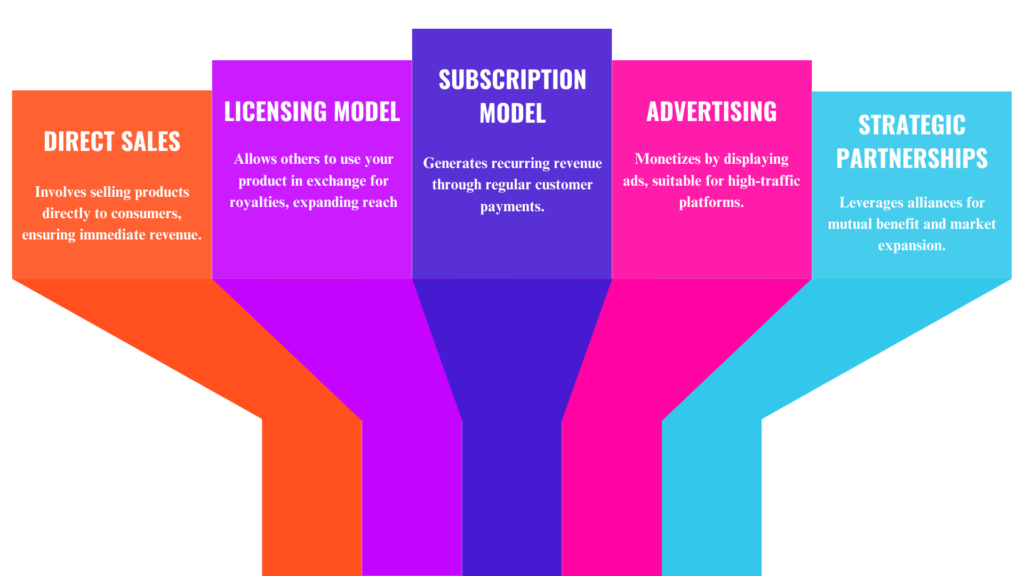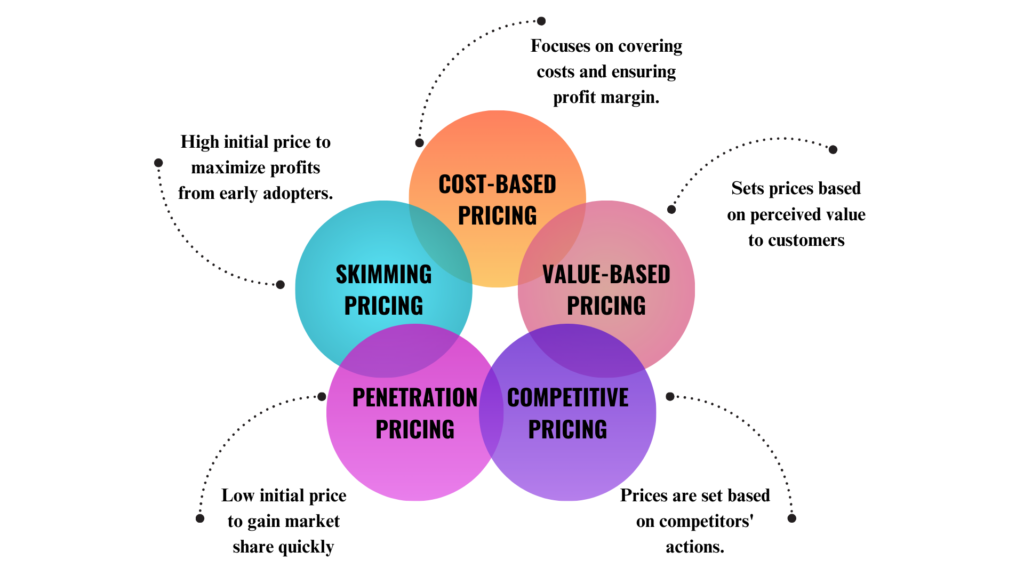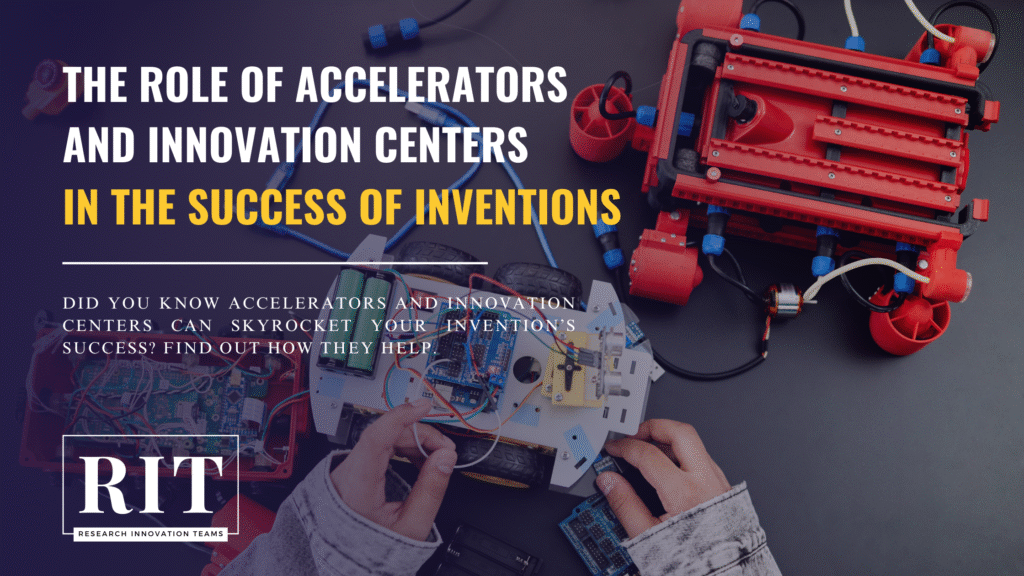In today’s world, where technology and innovation are advancing at an unprecedented pace, new inventions and technologies are constantly emerging. According to a report by the World Intellectual Property Organization (WIPO), in 2023, more than 3.5 million patent applications were filed worldwide, reflecting a 4.2% increase compared to the previous year. Additionally, China, the United States, and Japan continue to lead the countries with the highest number of patent filings. This remarkable growth indicates the increasing competition in the fields of technology and innovation, as well as the importance of adopting the right market entry strategies.
However, the success of a new invention or technology is not solely limited to its quality and innovation. The way it enters the market and the strategies employed to introduce it to customers also play a decisive role. Research conducted by the consulting firm McKinsey shows that over 70% of new products fail within the first five years of entering the market. One of the main reasons for these failures is the lack of sufficient understanding of the target market and customer needs.
According to data released by Statista, the global technology market was valued at approximately 5.3 trillion dollars in 2023, and it is expected to grow to over 6 trillion dollars by 2025. This growth presents numerous opportunities for new innovations, but it also brings several challenges, including intense competition and rapid changes in customer demand.
This article explores key market entry strategies for new inventions and technologies. From market analysis and product development to marketing strategies and scalability planning, each of these stages plays a crucial role in the success of a new technology.
1. Market Analysis and Evaluation
Before taking any practical steps, having a clear understanding of the target market, customer needs, and competitor analysis is essential. Businesses must conduct thorough research on market trends, its size and growth rate, customer needs, and competitive opportunities. Utilizing tools like SWOT analysis (Strengths, Weaknesses, Opportunities, Threats) and PESTLE analysis (Political, Economic, Social, Technological, Legal, Environmental factors) can help provide a deeper understanding of the market environment.
Additionally, reviewing statistical data from reputable sources like Statista, WIPO, and annual reports from research firms such as Gartner can provide valuable information about customer behavior and market developments. For example, according to Gartner’s report, the global technology market is expected to grow by 7.8% in 2023, indicating increased demand for technological innovations.
To better assess the market, conducting field research such as surveys, focus groups, and big data analysis is also recommended. These methods help businesses to identify customer needs more accurately and develop products or services to meet these needs.
Finally, competitor analysis is also a crucial part of market evaluation. Examining competitors’ marketing strategies, business models, pricing, and their strengths and weaknesses can provide a valuable insight into developing a market entry strategy. Tools like Porter’s Five Forces analysis can help identify barriers to entry and competitive opportunities.
2. Customer Persona Development
A precise understanding of target customers can be achieved by creating customer personas. A customer persona includes demographic characteristics (age, gender, income level, location), psychological characteristics (interests, values, lifestyle), and behavioral patterns (purchase decision-making, brand interactions, loyalty levels).
Creating a strong customer persona requires collecting real data through market research, surveys, customer purchase data analysis, and social media insights. For example, if a new technology is developed in the digital health sector, understanding the specific needs of active users in this field, such as athletes or chronic patients, can help optimize the product and marketing strategy.
Additionally, competitive analysis can provide valuable information about potential customers. Studying users of direct and indirect competitors and understanding their reasons for choosing certain products can play a crucial role in shaping customer personas. For instance, a business specializing in project management software can analyze the behavior of customers using similar products to enhance its own features.
Finally, it’s important to continually update your customer persona based on market changes and user feedback. Technologies and user needs are constantly changing, and a successful business must be able to keep up with these changes and adjust its marketing and product strategies based on new data.
3. Choosing the Right Business Model
There are various business models for market entry, including direct sales, licensing, subscription models, advertising, and strategic partnerships. Selecting the right business model should be based on available resources, business objectives, and market conditions.

- Direct Sales: A common model where companies sell their products or services directly to end customers. This approach requires significant investment in marketing and distribution networks but provides greater control over pricing and customer relationships.
- Licensing Model: Suitable for companies that want to grant other businesses access to their technology or invention and generate revenue through royalties. This model is ideal for companies with limited resources for production or distribution and carries lower risk compared to independent manufacturing.
- Subscription Model: Gaining significant popularity in recent years, this model involves providing services or products through monthly or annual subscriptions. Companies like Netflix and Spotify use this model to create a stable revenue stream.
- Advertising: Another revenue-generating method, primarily used in digital and media industries. In this model, users access services for free while businesses earn income through displaying advertisements.
- Strategic Partnerships: Collaborating with other companies can accelerate market entry. This model includes mergers, joint ventures, and strategic alliances, which can help reduce development and marketing costs while expanding access to distribution networks.
Choosing the right business model depends on several factors, including available capital, risk tolerance, consumer behavior, and market competition. Companies that align their business model with market demands and customer needs have a higher chance of success and growth.
4. Intellectual Property Protection
Protecting intellectual property rights through patents, trademarks, or copyrights prevents copying and potential misuse while helping to establish a sustainable competitive advantage. Patents ensure that your technology or innovation is legally protected for a specific period, preventing competitors from using it without permission. Trademarks safeguard your brand identity against misuse and help differentiate your product in the market. Copyrights are essential for protecting digital content, software, and written works.
Additionally, using Non-Disclosure Agreements (NDAs) when sharing sensitive information with partners and employees is an effective way to prevent unintended disclosure of ideas and technologies. Intellectual property management strategies, such as continuously monitoring the market for violations and taking legal action, when necessary, can help maintain a competitive edge.
5. Product Development and Market Testing
Building a prototype and conducting necessary tests to ensure product efficiency and quality are essential steps in the technology development process. This stage includes designing and creating prototypes, testing performance in real-world conditions, evaluating manufacturability, and analyzing initial customer feedback. Prototypes can be physical or digital and play a crucial role in identifying potential issues and optimizing the product before mass production.
Additionally, performing quality control tests, technical assessments, industry standard compliance checks, and obtaining necessary certifications can help build trust among customers and business partners. Utilizing various methods such as A/B testing, target user testing, and controlled sampling provides a better understanding of customer needs and improves product design.
Moreover, leveraging expert opinions and competitive analysis can aid in refining design and production strategies. Finally, after reviewing initial customer feedback and making necessary adjustments, the product will be ready for market entry and competition with similar offerings.
6. Developing a Marketing Strategy
Effective marketing strategies for successfully introducing a product to the market include digital marketing, advertising, participation in industry exhibitions, content marketing, word-of-mouth marketing, and influencer collaborations.
- Digital marketing involves using social media, Google ads, search engine optimization (SEO), and email marketing to boost brand awareness and attract customers. Targeted advertising on various platforms helps reach the right audience.
- Industry exhibitions provide opportunities for direct customer interaction and networking with other industry professionals.
- Content marketing, through articles, educational videos, and engaging infographics, helps build trust and increase audience awareness.
- Word-of-mouth marketing, based on customer opinions and recommendations, remains one of the most effective promotional methods.
- Influencer and industry thought leader collaborations can enhance brand credibility and attract new audiences.
A well-rounded marketing strategy that integrates these approaches can significantly improve market entry success and long-term brand growth.
7. Determining a Pricing Strategy
Setting the right price for a new product or technology should be based on a comprehensive analysis of production costs, marketing expenses, value proposition, competitor pricing, and customer price sensitivity. Proper pricing can enhance market positioning and improve profitability.

There are several pricing methods, including:
- Cost-Based Pricing: Determines the price by calculating all production and distribution costs and adding a reasonable profit margin.
- Value-Based Pricing: Sets the price based on the perceived value of the product to customers.
- Competitive Pricing: Establishes pricing in comparison to competitors’ prices.
Additionally, specific pricing strategies can be used depending on market conditions and business goals:
- Penetration Pricing: Setting a low initial price to attract customers and gain market share.
- Skimming Pricing: Setting a high initial price to maximize profits from early adopters before gradually lowering it.
Incorrect pricing can lead to reduced demand, loss of market share, or decreased profitability. Therefore, periodic reviews and adjustments based on market changes and customer feedback are essential to maintaining an optimal pricing strategy.
8. Choosing Distribution Channels
Selecting the right distribution channels is one of the most critical factors for successful market entry. Various options exist for distributing products and services, including direct sales, partnerships with retailers, online sales, wholesalers, and working with sales representatives. Each method has its own advantages and challenges, and choosing the right combination of them can help increase sales and efficiency.
- Direct sales to customers provide greater control over the customer experience and higher profit margins but require significant investment in sales teams and logistics infrastructure.
- Retail partnerships allow access to a larger customer base but involve managing distributor relationships and lower profit margins.
- Online sales, through dedicated websites or e-commerce platforms like Amazon and Alibaba, reduce operational costs and expand customer reach. However, challenges include high competition and digital advertising expenses.
- Working with sales representatives and regional distributors can facilitate faster entry into local and international markets.
Businesses that align their distribution model with market needs and customer behavior have a greater chance of success.
9. Planning for Growth and Scalability
After a successful market entry, businesses must focus on expansion and increasing production capacity. Scalability involves boosting production, entering new markets, expanding distribution networks, and optimizing internal processes.
- Increasing Production Capacity: This can be achieved by optimizing production lines, automating processes, and investing in advanced technologies. For example, companies using smart manufacturing technologies can scale production without significantly increasing operational costs.
- Entering New Markets: Expanding into new regions requires market research, understanding consumer needs, and adapting products or services to cultural and economic conditions. Forming strategic partnerships and collaborating with local distributors can help overcome entry barriers.
- Improving Internal Processes: Efficient supply chain management, cost optimization, and leveraging digital technologies such as data analytics and artificial intelligence (AI) play a crucial role in sustainable growth and profitability.
A well-planned scalability strategy ensures long-term success and a competitive advantage in the market.
10. Continuous Evaluation and Improvement
After entering the market, it is essential to regularly review product performance, gather customer feedback, and refine business strategies. This process includes analyzing sales data, consumer trends, customer behavior, and benchmarking against competitors. Utilizing data analytics tools such as Business Intelligence (BI) dashboards and Customer Relationship Management (CRM) systems can help optimize processes.
Additionally, conducting regular surveys, in-depth customer interviews, and analyzing feedback from social media provides valuable insights into a product’s strengths and weaknesses. These insights enable businesses to enhance product features and improve user experience.
Monitoring market shifts and competitor innovations also helps refine marketing and sales strategies. Ultimately, businesses that adopt a flexible approach and continuously adjust their strategies based on data and feedback have a better chance of achieving long-term success.
Conclusion
A successful market entry requires a combination of creativity, in-depth analysis, strategic planning, and flexibility in response to market changes. In today’s competitive world, innovative inventions and technologies alone are not enough; the way a business enters and establishes itself in the market plays a crucial role in its success or failure. Companies that enter the market with careful planning and continuous analysis have a higher chance of gaining a competitive advantage.
Market analysis and understanding customer needs are among the most critical steps in this process. Studies show that over 70% of startups fail due to a lack of product-market fit. Therefore, identifying the target audience, analyzing competitors, and offering a unique value proposition are key success factors. Additionally, using big data and consumer behavior analysis helps in gaining better insights into purchasing patterns.
On the other hand, effective marketing and distribution strategies play a vital role in the acceptance and success of new products. Businesses that use modern marketing methods, such as digital marketing, influencer partnerships, and targeted advertising, can reach potential customers faster. Furthermore, selecting the right distribution model, such as direct sales, working with retailers, or online sales, helps optimize the sales process.
Ultimately, businesses that can adapt to market changes and continuously evaluate and improve their processes will achieve more sustainable success. Collecting customer feedback, analyzing competitor performance, and maintaining a flexible approach in pricing and production strategies are essential for long-term growth and development. By integrating these principles, businesses can not only increase their market share, but also solidify their position and drive innovation within their industry.
“Even if we do not talk about 5G (specifically), the security talent in general in the country is very sparse at the moment. We need to get more (security) professionals in the system”
“This article was generated with the assistance of AI and edited by our team to ensure accuracy and quality.”






